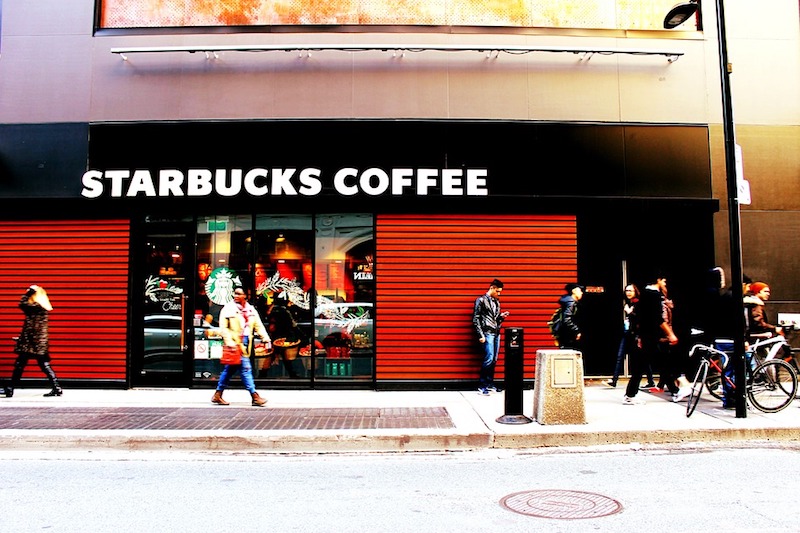Starbucks recently announced its plan to create the “Starbucks Greener Stores” framework. The framework will be built on comprehensive performance criteria to help the company design, build, and operate stores that set a “new standard for green retail.”
Starbucks will develop an accredited program over the next year that will be used to audit all existing company-operated stores in the U.S. and Canada against the framework criteria. This will result in 10,000 “Greener Stores” globally by 2025 and includes existing stores, new builds, and renovations.
See Also: 43,000-sf Chicago Starbucks will be world’s largest
The World Wildlife Fund will co-develop the framework with Starbucks and SCS Global Services, a third-party verification organization, will audit and verify it. The new framework will be built on a foundation of the LEED certification program and offer a comprehensive model and broad environmental scope that will be universal in design, but most relevant to the retail industry. Starbucks Greener Stores will focus on:
— Energy efficiency & water stewardship
— Renewable energy
— Healthy environment
— Responsible materials
— Waste Diversion
— Engagement
The Starbucks Greener Stores framework is expected to save the company $50 million in utilities over the next decade.
Related Stories
| Aug 4, 2022
Newer materials for green, resilient building complicate insurance underwriting
Insurers can’t look to years of testing on emerging technology to assess risk.
| Aug 4, 2022
Newer materials for green, resilient building complicate insurance underwriting
Insurers can’t look to years of testing on emerging technology to assess risk.
Sustainability | Aug 4, 2022
To reduce disease and fight climate change, design buildings that breathe
Healthy air quality in buildings improves cognitive function and combats the spread of disease, but its implications for carbon reduction are perhaps the most important benefit.
K-12 Schools | Aug 1, 2022
Achieving a net-zero K-12 facility is a team effort
Designing a net-zero energy building is always a challenge, but renovating an existing school and applying for grants to make the project happen is another challenge entirely.
Codes and Standards | Jul 29, 2022
Few projects and properties are being built beyond code
Clients and architects disagree on how well building to code provides resilience, according to a recent report by the American Institute of Architects (AIA) in partnership with Owens Corning.
Concrete | Jul 26, 2022
Consortium to set standards and create markets for low-carbon concrete
A consortium of construction firms, property developers, and building engineers have pledged to drive down the carbon emissions of concrete.
Green | Jul 26, 2022
Climate tech startup BlocPower looks to electrify, decarbonize the nation's buildings
The New York-based climate technology company electrifies and decarbonizes buildings—more than 1,200 of them so far.
Education Facilities | Jul 26, 2022
Malibu High School gets a new building that balances environment with education
In Malibu, Calif., a city known for beaches, surf, and sun, HMC Architects wanted to give Malibu High School a new building that harmonizes environment and education.
Mixed-Use | Jul 18, 2022
Mixed-use development outside Prague uses a material made from leftover bricks
Outside Prague, the Sugar Factory, a mixed-used residential development with public space, marks the largest project to use the sustainable material Rebetong.
Sustainable Development | Jul 14, 2022
Designing for climate change and inclusion, with CBT Architects' Kishore Varanasi and Devanshi Purohit
Climate change is having a dramatic impact on urban design, in terms of planning, materials, occupant use, location, and the long-term effect of buildings on the environment. Joining BD+C's John Caulfield to discuss this topic are two experts from the Boston-based CBT Architects: Kishore Varanasi, a Principal and director of urban design; and Devanshi Purohit, an Associate Principal.

















